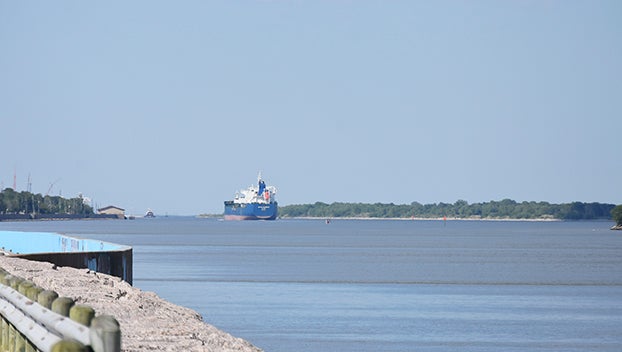BRIAN JOHNSON ON OUTDOORS: Fishing the spring spawn
Published 11:00 pm Sunday, March 11, 2018

- Brian Johnson catches a bass on Lake Fork. (Courtesy photo)
Editor’s note: Brian Johnson has resumed his column to be run on a weekly basis, regularly each Sunday. Due to an editorial error in production, this column was not included in the Sunday, March 11, edition, as planned.
By Brian Johnson
Unless you have been locked up inside of your house for the past several weeks, or live under a rock, you have probably noticed that spring is on its way.
There is usually one final cold snap before Easter Sunday, but for the most part, things are warming up. As I drive through the country, I can see little green buds forming on the trees, the grass is starting to grow, wild flowers are blooming, and the birds seem to be singing a cheerful song. When I pass by a pond, or really any body of water for that matter, I see a yellow film of pollen on the water. This yellow film means that one of my favorite times of year is finally here.
The time of year I am referring to is the spring bass spawn. It is during this time of year that 90 percent of the bass in the lake move into water that is 5 feet deep or less.
Usually a lot less. When the bass concentrate in shallow water, it gives us fishermen a slight advantage. Many of the fish will be visible to the naked eye which will allow for sight fishing.
For lots of bass fishermen, this is their favorite way to fish. If you would like to give this method a shot, here are a few tips:
Generally speaking, you simply put on a pair of polarized sunglasses and troll through the shallows looking for bedded fish. Sandy bottoms and buck brush are favorite place for bass to bed so when you begin your search for bass, this is a good starting place.
Once the bass has been spotted, you have a couple of ways you can respond. First you can begin by casting into the bed with whatever your favorite bait is and hope for the best. However, if you have a more advanced plan of attack, you will likely see more success.
Instead of casting a giant spinner bait or top water lure, you might try a little more finesse. Try not to cast directly onto the bed and make a big splash. This will often spook the fish, and your chances of hooking up will decrease. Cast well beyond the bed and try to land the bait softly. Practice lifting your rod tip just before the bait lands and it will enter the water much quieter.
Some great baits to try include plastic lizards (bass hate lizards), Yamamoto Senko in watermelon red flake color, tube jigs, and plastic frogs. Work the lure very slowly around the bed and be patient. Don’t be afraid to make several casts with various lures. The main thing is to be stealthy and not let the fish see you. If the fish spooks, mark the spot, either by a physical land mark or GPS, and come back a few hours later.
Also keep in mind that there will often be a smaller male guarding the bed. It is not uncommon to catch the male, or buck bass, and throw back to the same spot to catch the female. Once you have located a bedding area for one or two fish, look in the nearby coves because there will certainly be more.
As far as which rod and reel combo is best … there are as many opinions as there are rods and reels. I have watched the Bassmasters on TV using light line on spinning tackle with tube jigs and they catch monsters. By light I mean 10-pound or less monofilament.
For me however, this never works. I use a 6.5- to 7-foot rod with 65-pound braid when fishing heavy cover. I am sure that some fish see my line, and I might get more strikes with lighter line. But, when I do get a hawg to bite, I want to make sure I get her in the boat without her breaking my line. For me … heavy braid is the only way to go. I stand by the old saying of “go big or go home.”
I have found that although the fishing is usually really good this time of year, there are certain challenges that come with it. The biggest one that I have faced is generally the weather. The wind seems to blow nonstop, which makes big lakes like Sam Rayburn and Toledo Bend very dangerous.
It is also not uncommon for storms to pop up. However, with today’s radar technology, if you pay attention to the weather in advance you should be fine. I usually try to launch at the ramp closest to where I plan to fish so that I don’t have to run the entire lake.
Also remember that if the wind and waves get too bad, you can always wait it out in the very back of the coves. Besides being safer … that’s where most of the big ones are this time of year anyway.
I hope this warmer weather will motivate you to get outdoors and enjoy God’s great creation. When you go fishing, take a kid and y’all will both be glad you did. Remember it’s our job to pass the sport on to future generations. Good luck, may God bless you, and happy fishing!





